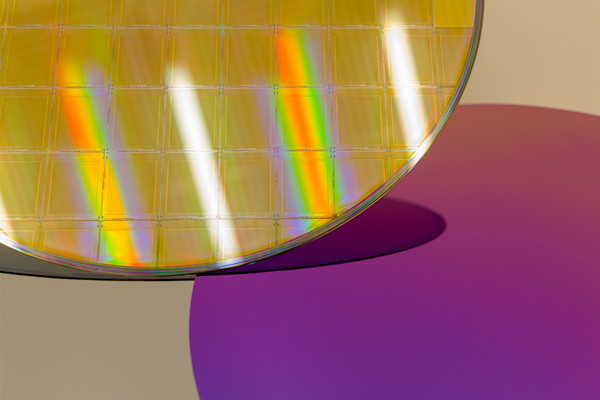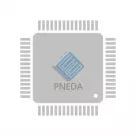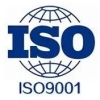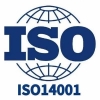Silicon photonics technology leads innovation in co-packaged optics

In today's era of rapid information development, data centers and communication networks have increasingly high requirements for optical devices. To meet this demand, silicon photonics is innovating with co-packaged optics. Silicon photonic technology relies on the excellent characteristics of silicon-based materials, coupled with micro and nano processing technology, the photoelectric integration is highly efficient, so that optical devices have a great breakthrough in performance, cost and integration.
The basis of silicon photonics technology
Silicon photonic technology is a technology that integrates optical components such as optical waveguides, lasers and detectors of silicon materials. Its core benefit is that the optical properties of the silicon material itself are good, and efficient optical signal transmission can be achieved in a small volume. Combined with traditional electronic components, the optical signal can be processed and transmitted in a very small space, and the data transmission rate is suddenly up, and the delay is reduced a lot.
In addition, silicon photonics technology can also take advantage of existing semiconductor manufacturing processes to reduce production costs. Compared with traditional optical component manufacturing methods, it can be mass-produced, which paves the way for widespread applications. Silicon photonic integrated circuits, for example, can be produced together with electronic circuits in standard semiconductor manufacturing processes, simplifying the production process and improving efficiency.
Concept of co-packaged optical devices
As can be seen from the name, co-packaged optical devices are several optical and electronic components in a package. This technology not only allows the system to be more integrated, but also allows the physical space required in the same device to be greatly reduced. In the optical communication system, this co-packaged optical device can put the photoelectric signal conversion, transmission and processing of these functions together, so that the performance and reliability of the entire system are up.
Through co-packaging, a wide variety of optical components such as lasers, light detectors, and wavelength division multiplexers (WDM) can be compact together. This design is based on the development of silicon photon technology, so that each optical component through the optical waveguide and interconnect layer to achieve efficient signal transmission, the signal loss in the transmission process is also less.
Let's look at the application of silicon photonics in co-packaged optical devices. In this co-packaged optical device, the application potential of silicon photonics technology can be great. First, in the high-bandwidth environment of the data center, silicon photonics technology can help design ultra-high-performance optical modules. These optical modules integrate several functions, such as transceivers, wavelength division multiplexing and optoelectronic conversion, to support higher data transmission rates and cope with the growing demand for data traffic.
Second, silicon photonics is also useful in long-distance fiber-optic communications. For example, by integrating a laser and light detector on the same chip, the path of the light signal is shorter and the signal delay is reduced. Coupled with the low optical loss characteristics of silicon photons, the attenuation of optical signals in long-distance transmission is also effectively reduced, and data transmission is more stable and reliable.
With the development of this technology, silicon photons are much better at transmitting data than traditional copper wire connections. Like the silicon photonic cold package device, it can maintain low latency during the transmission of high frequency signals, which provides support for high-frequency trading and cloud computing applications that are sensitive to delay.
Although silicon photonics technology has great potential for application in co-packaged optical devices, there are still some challenges in the development process. On the one hand, how to solve the problems related to thermal management, power consumption and heat dissipation in the integration process is the key to achieve high-density co-packaging. On the other hand, the realization of more efficient optical interconnection technology to improve the efficiency and reliability of signal transmission is also the focus of future research.
As technology continues to advance, it is expected that more innovative solutions will come out in the future to promote the better integration of silicon photonics and co-packaged optics. This may include not only new materials and structural designs, but also new manufacturing processes and system architectures. Major technology companies and research institutions are actively exploring these directions to achieve higher integration and performance.
The trend of composite packaging will become an important direction for the development of optical devices in the future, especially in the fields of high-performance computing, edge computing and artificial intelligence, and silicon photonics technology is indispensable. By combining with modern semiconductor technology, silicon photonics technology can bring more possibilities to the future of optical devices.
Silicon photonic technology, as an important force leading the development of a new generation of optical devices, has been promoting the innovation of co-packaged optical devices. In the future market competition, this technology will become one of the solutions that industries rely on in particular. As related technologies and applications continue to expand, we are waiting for silicon photonics technology to bring more surprises and changes.
您可能感興趣的產品
 |
AIML-1008HC-4R7M-T | FIXED IND 4.7UH 1.3A 120 MOHM | 2178 More on Order |
 |
AMPMGGD-11.0590T3 | MEMS OSC XO 11.0590MHZ CMOS SMD | 3490 More on Order |
 |
AMPMEDA-26.0000T3 | MEMS OSC XO 26.0000MHZ CMOS SMD | 6966 More on Order |
 |
AMPMGGC-33.333333T | MEMS OSC XO 33.3333MHZ CMOS SMD | 2484 More on Order |
 |
AMPMDFC-24.5760 | MEMS OSC XO 24.5760MHZ CMOS SMD | 7308 More on Order |
 |
AMPMGGD-12.2880 | MEMS OSC XO 12.2880MHZ CMOS SMD | 7506 More on Order |
 |
ASTMUPCV-33-122.880MHZ-LJ-E-T | MEMS OSC XO 122.8800MHZ LVCMOS | 5922 More on Order |
 |
ASVV-16.000MHZ-N152-T | XTAL OSC VCXO 16.0000MHZ CMOS | 8838 More on Order |
 |
AST3TQ53-V-12.800MHZ-2-SW | XTAL OSC VCTCXO 12.8000MHZ SNWV | 8766 More on Order |
 |
AX7PBF4-1244.1600T | XTAL OSC XO 1.24416GHZ LVPECL | 2052 More on Order |
 |
AX7MBF1-1200.0000T | XTAL OSC XO 1.2000GHZ CML SMD | 6660 More on Order |
 |
AX5DAF4-1350.0000C | OSC XO 1.35GHZ 3.3V LVDS | 5598 More on Order |
 |
AX7MAF1-669.3266C | XTAL OSC XO 669.3266MHZ CML SMD | 6102 More on Order |
 |
AX7MBF1-753.0000T | XTAL OSC XO 753.0000MHZ CML SMD | 2592 More on Order |
 |
AX5DAF2-983.0400T | OSC XO 983.04MHZ 3.3V LVDS | 7578 More on Order |
 |
AX7MCF1-312.5000T | XTAL OSC XO 312.5000MHZ CML SMD | 3942 More on Order |
 |
ASTMHTD-24.000MHZ-ZK-E-T3 | MEMS OSC XO 24.0000MHZ LVCMOS | 6570 More on Order |
 |
ASTMHTA-66.666MHZ-AC-E-T | MEMS OSC XO 66.6660MHZ LVCMOS | 7650 More on Order |
 |
ASTMLPA-16.000MHZ-EJ-E-T | MEMS OSC XO 16.0000MHZ LVCMOS | 3096 More on Order |
 |
ASCO2-20.000MHZ-EK-T3 | XTAL OSC XO 20.0000MHZ CMOS SMD | 8874 More on Order |
 |
ABM12W-24.5454MHZ-8-J1Z-T3 | CRYSTAL 24.5454MHZ 8PF SMD | 5616 More on Order |
 |
ABM11W-20.4800MHZ-7-K1Z-T3 | CRYSTAL 20.4800MHZ 7PF SMD | 5076 More on Order |
 |
ABM8W-30.3200MHZ-7-K1Z-T3 | CRYSTAL 30.3200MHZ 7PF SMD | 3564 More on Order |
 |
ABM8W-25.0000MHZ-7-J1Z-T3 | CRYSTAL 25.0000MHZ 7PF SMD | 5220 More on Order |









